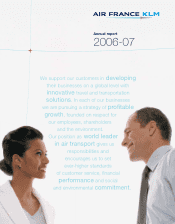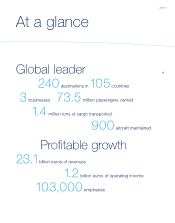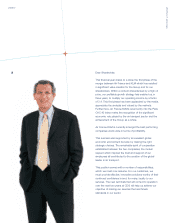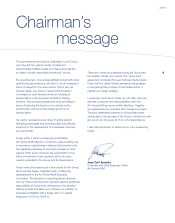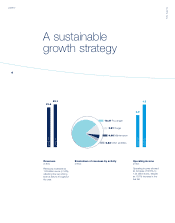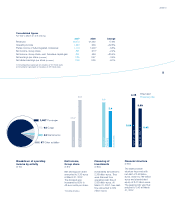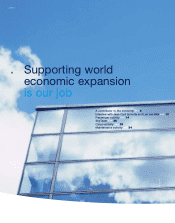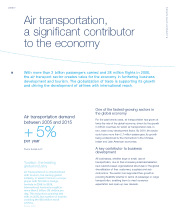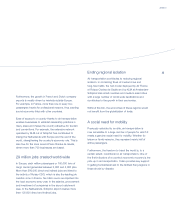Air France 2007 Annual Report Download - page 11
Download and view the complete annual report
Please find page 11 of the 2007 Air France annual report below. You can navigate through the pages in the report by either clicking on the pages listed below, or by using the keyword search tool below to find specific information within the annual report.
2006-07
Furthermore, the growth in French and Dutch company
exports is mostly driven by markets outside Europe.
For example, in France, more than one in every two
passengers travels for professional reasons, thus creating
sound economic links with other countries.
Ease of access to a country thanks to air transportation
enables businesses to establish leadership positions in
many areas and makes the country attractive for tourism
and conventions. For example, the extensive network
operated by KLM out of Schiphol has contributed to
linking the Netherlands with Europe and the rest of the
world, strengthening the country’s economic role. This is
also true for the zone around Paris-Charles de Gaulle,
where more than 700 businesses are based.
29 million jobs created world-wide
In Europe, each million passengers or 100,000 tons of
cargo carried generates between 3,000 and 4,000 jobs.
More than 280,000 direct and indirect jobs are linked to
the activity of Roissy-CDG, which is also the leading job
creation zone in France. Ten billion euros are injected into
the local economy every year, in the salaries, procurement
and investment of companies in the airport catchment
area. In the Netherlands, Schiphol airport creates more
than 120,000 direct and indirect jobs.
Ending regional isolation
Air transportation contributes to reducing regional
isolation. In combining flows of medium-haul and
long-haul traffic, the hub model deployed by Air France
at Roissy-Charles de Gaulle and by KLM at Amsterdam-
Schiphol links small countries and medium-sized cities
with a large number of world-wide destinations and
contributes to the growth in their economies.
Without this link, the economies of these regions would
not benefit from the globalization of trade.
A social need for mobility
Previously restricted to an elite, air transportation is
now accessible to a large number of people for which it
meets a genuine social need for mobility. Whether for
leisure or family reasons, they represent nearly half of
airline passengers.
Furthermore, the freedom to travel the world is, to a
certain extent, conditional on air transportation. One of
the first indicators of a country’s economic recovery is the
pick-up in air transportation. It also provides key support
in getting humanitarian aid to the farthest flung regions or
those struck by disaster.
9

